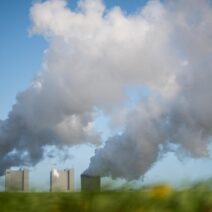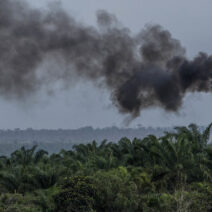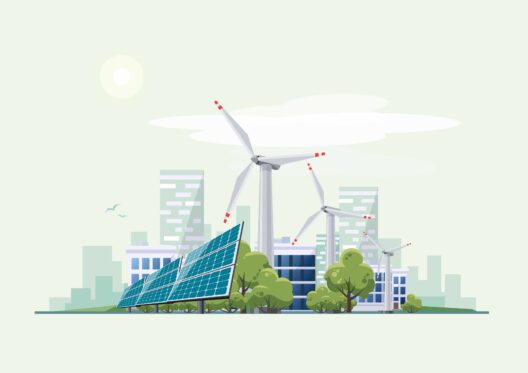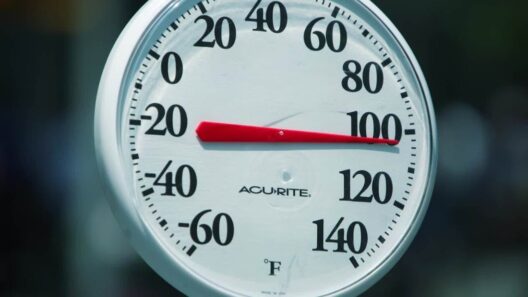The phenomenon of tornadoes is one of nature’s most violent manifestations. These destructive swirls of wind can wreak havoc in a matter of moments, obliterating homes, uprooting trees, and endangering lives. As climate change continues to alter the parameters of our planet’s weather systems, the connection between global warming and tornado activity warrants a detailed exploration. Could it be that an invisible force in our atmosphere influences the very fabric of storms that terrify us? This poses an intriguing challenge: understanding the intricate relationship between global warming and the increasing frequency and intensity of tornadoes.
Tornadoes are defined as rapidly rotating columns of air in contact with both the surface of the Earth and a cumulonimbus cloud or, in rare cases, the base of a cumulus cloud. While the United States experiences the majority of tornadoes worldwide, these phenomena can occur globally, albeit under varied climatic conditions. The mechanics of tornado formation are complex, typically involving severe thunderstorms where strong wind shear exists. However, the escalating impacts of global warming may significantly influence these mechanisms.
One of the most pressing concerns regarding climate change is the increase in atmospheric instability. Warmer air can hold more moisture; when this humid air meets cooler, drier air, the resulting contrast can create the perfect breeding ground for severe thunderstorms. A well-known maxim in meteorology is that severe storms arise from the tension within the atmosphere, and warmer temperatures intensify this struggle, potentially leading to more frequent supercell thunderstorms—often known as the birthplaces of tornadoes.
Research indicates that as global temperatures rise due to greenhouse gas emissions, the conditions conducive to tornado formation may become increasingly favorable. This raises the pertinent question: are we inviting a future of heightened tornado threats by continuing down a path of environmental neglect? The science is still evolving, but trends suggest that tornadoes are not merely random occurrences; they are intertwined with the climate system in a delicate dance both frozen and fluid.
Moreover, the intensity of tornadoes may also be shifting in response to climate change. Enhanced thermal energy in the atmosphere can lead to stronger tornadoes with higher wind speeds and more destructive potential. The Enhanced Fujita Scale, which categorizes tornadoes based on their wind speed and the resultant damage, suggests that the most devastating tornadoes might become more commonplace. Observational data from recent years hint at a disturbing trend: the prevalence of high-end tornadoes—those rated EF3 and above—could correlate with increasing temperatures and altered weather patterns.
It is equally important to consider the geographical variances in tornado activity as influenced by climate change. Changes to global and local weather patterns may reposition areas traditionally considered at low risk for tornadoes into more high-risk zones. The United States’ “Tornado Alley,” typically associated with the Great Plains, may experience shifts in tornado pathways due to changing temperature gradients and moisture availability. This emergent risk also extends internationally; countries that have not historically experienced tornadoes might find themselves facing this formidable threat. In Europe, for example, tornado occurrences have been verified in places previously regarded as relatively safe.
The implications of these developments extend beyond meteorological anomalies. The socio-economic ramifications of rising tornado threats are staggering. Communities located in tornado-prone areas must invest exponentially in infrastructure, emergency preparedness, and response systems. Urban planners may need to reconsider zoning laws and building codes to ensure adequate safety from the increasing menace posed by tornadoes. Furthermore, insurance industries will face escalating claims, potentially affecting premiums and the availability of coverage in high-risk regions.
Addressing climate change to mitigate the severity of these storms requires a comprehensive strategy. Transitioning to renewable energy sources to reduce greenhouse gas emissions is paramount. Increased investment in sustainable practices can reduce the overall carbon footprint, thereby lessening the atmospheric changes that fuel tornado intensity. Additionally, education and outreach are critical. Raising awareness about tornado preparedness and climate change advocacy builds resilient communities ready to face the challenges ahead. It sparks conversations among citizens about their personal impact on the environment and galvanizes action for a more sustainable future.
This discourse inevitably raises another question: can individual actions truly influence large-scale climate phenomena? The answer lies in collective efforts. Every small measure taken in households, communities, and nations contributes to a larger movement toward sustainability. From reducing energy consumption to advocating for policy changes, every individual has a part to play in addressing the escalating threat of tornadoes in a warming world.
In summation, the intertwining of tornado threats and global warming is not merely a theoretical quandary; it is a reality we must confront. By understanding the dynamics of climate change and its effects on tornado activity, society can better prepare for the formidable storms of the future. Embracing sustainable practices is more than a choice; it is a necessity. While the destructive swirls of tornadoes can leave trails of devastation in their wake, a proactive approach can inhibit their frequency and intensity. Addressing this issue and advocating for a healthier planet is not merely a responsibility but an imperative for current and future generations.








